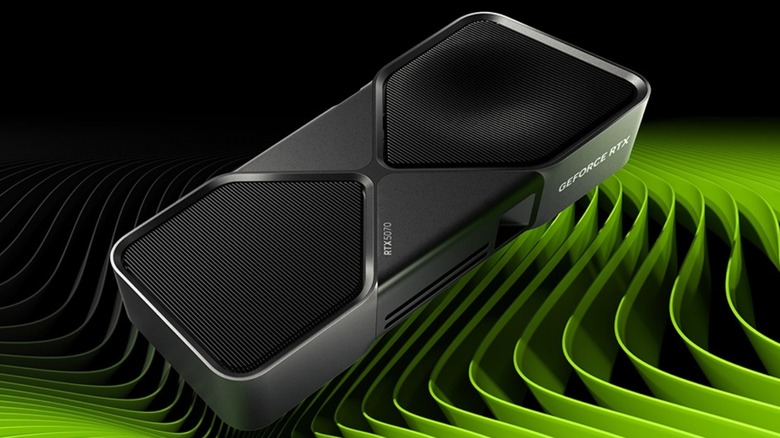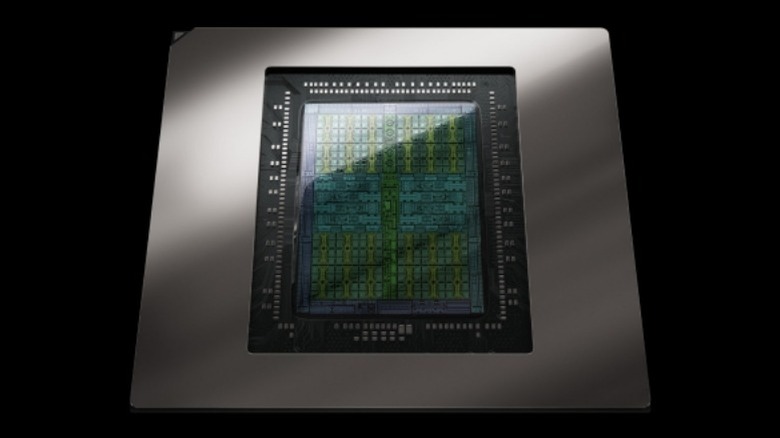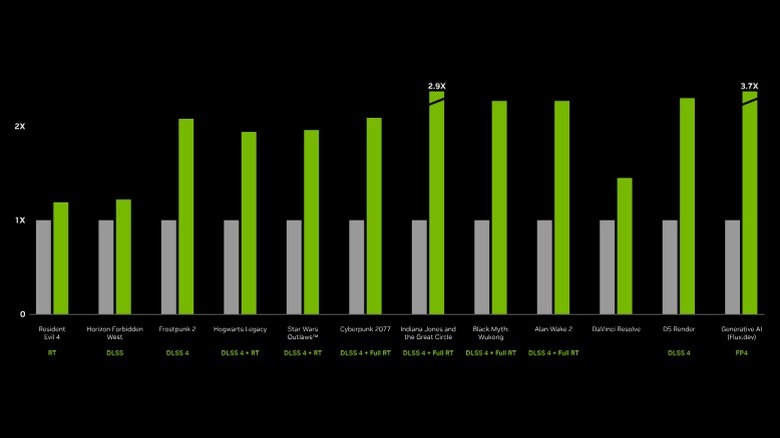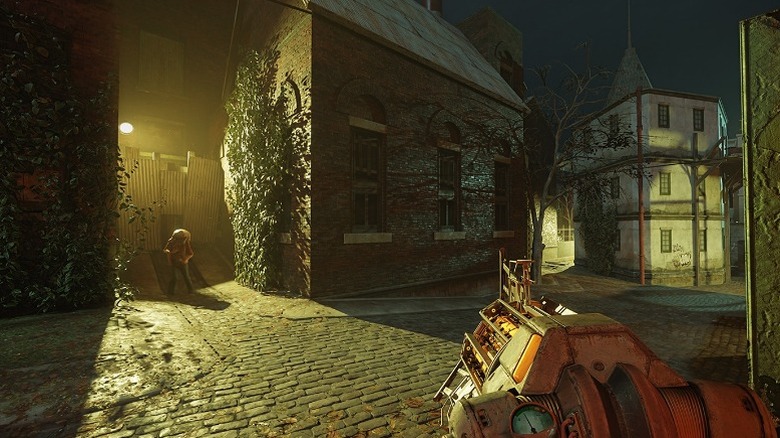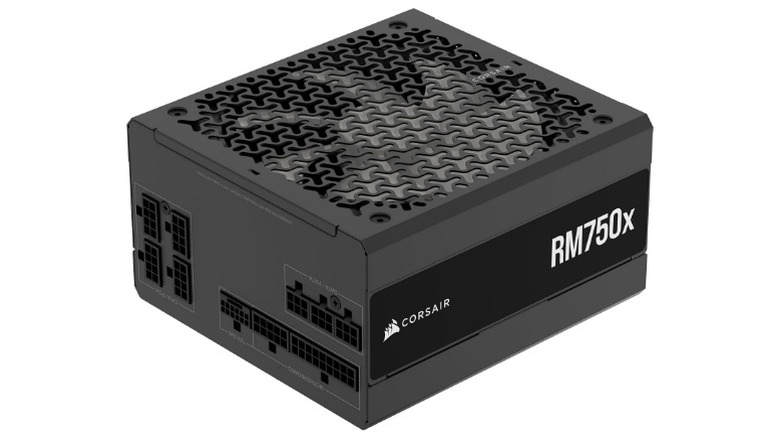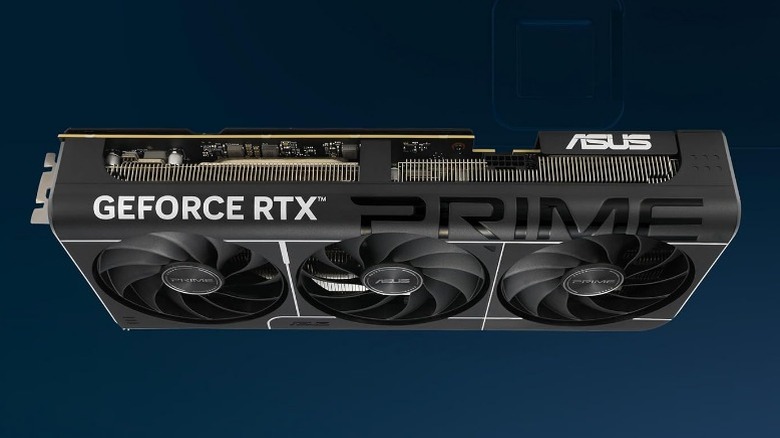RTX 5070 Vs. RTX 5070 Ti: Is It Worth Paying Extra For The Higher-Performance GPU?
We may receive a commission on purchases made from links.
Nvidia's GPU release strategy is pretty well-known at this point. Its engineers develop the next generation's chipset architecture, the company releases a line of models ranging from entry level to high-end, and then a few months later, it releases an upgraded version of those models with a 'Ti' or 'Super' designation. This pattern doesn't come as much of a surprise to long-time followers of the company, but it does raise some questions.
The new RTX 5070 is the company's latest midrange GPU. There are a lot of pros and cons associated with upgrading to Nvidia's RTX 50 Series graphics cards in general, but those that are targeting the midrange in particular might be curious what the benefits of getting the new 5070 Ti are, and whether it's worth the extra cost over the standard RTX 5070.
I've been building custom gaming PCs for nearly a decade and have been an avid follower of Nvidia's technology since the 10 Series launched. I've learned that one of the best ways to compare cost to performance is to take a look at the specifications and the manufacturer's promised performance, then look at benchmarks performed by independent reviewers, before finally comparing the price difference to see if the upgrade is worth the cash.
What are the RTX 5070 and 5070 Ti's specs?
Both the RTX 5070 and 5070 Ti are based on the Blackwell 9th generation architecture and feature 5th-generation Tensor cores that are designed to emphasize AI performance, FP4, and DLSS 4. They also both feature 4th generation ray tracing cores for superior lighting effects in video games and other visual media. This might initially make them seem like they are quite similar, but there are several important differences that distinguish them.
To start, the Ti has gotten a big upgrade to memory. The base 5070 has 12 GB of DDR7 memory. This marked an upgrade in performance from the 12 GBs of GDDR6 that was used in the RTX 4070, but not an upgrade in capacity. The 5070 Ti, on the other hand, gets 16 GB of DDR7–putting it more in line with the 5080. This means that the card has a memory bandwidth of 896 GB/sec, which marks a significant boost over the standard 5070's 672 GB/second. This can make a big difference in tasks like video editing, generative AI, and certain video games.
The Ti sees an upgrade in AI TOPS (Tera Operations Per Second) from 988 to 1406, meaning that it's much faster at generative tasks, but it also gets a second NVENC encoder, which gives it a serious advantage in video editing and streaming tasks. These all seem like noteworthy improvements on paper, but how much does it actually change real-world performance?
Don't rely on Nvidia's reported performance metrics
Those who are considering getting one of these cards might be tempted to look at the performance metrics that Nvidia has reported on the product page, but this information isn't very helpful for comparing the RTX 5070 and RTX 5070 Ti. It illustrates performance across a number of different metrics, including several video game titles, the DaVinci Resolve video editing software, and Flux.dev generative AI–but it's not a good indicator of how they compare to each other.
There are two problems with the way Nvidia displays this information: It doesn't compare the 5070 and 5070 Ti graphics cards to each other, and it doesn't give clear information about what it measured to arrive at its reported numbers. The chart showcases the "relative performance" of each card in relation to the previous generation. So, it compares the 5070 to the 4070, and it compares the 5070 Ti to the 4070 Ti. It doesn't indicate what specific metric was measured to compare the performance, and because it doesn't compare them both to the same card as a baseline for performance, the marked improvements aren't really useful when attempting to compare the 50-series models to each other.
This might feel misleading to those who are new to purchasing a GPU and are seeking information that compares the 5070 to the 5070 Ti. For that, we'll need to take a look at what independent reviewers have had to say.
How do the RTX 5070 and 5070 Ti perform in independent testing?
One of the best ways to get comprehensive performance data is to compare benchmarks performed by independent testers.
The Verge ran several game-based benchmark tests that compared the 5070 and 5070 Ti, along with several other graphics cards. These tests compared average FPS (frames per second) as well as the 1% lows that they experienced during testing. For "Assassin's Creed Mirage" at the 1440p resolution, the 5070 averaged 143 FPS with 103 FPS lows, while the 5070 Ti managed an average of 164 FPS with 106 FPS lows. At 4K, the 5070 scored 106/83 while the 5070 TI scored 125/84. This shows a significant improvement, but not nearly so dramatic as the test results for "Cyberpunk 2077." The Verge ran the tests for this title using DLSS 4 with multiple frame generation settings, and the 5070 TI consistently crushed its predecessor across the board. At the highest settings in 1440p, the 5070 scored an average of 151 FPS while the Ti averaged 196 FPS. In 4K, this translated to averages of 77 FPS for the 5070 and 110 FPS for the Ti.
UL Benchmarks compared the median benchmark results aggregated from all users with the same hardware who ran the 3DMark Steel Nomad DX12 stress test. Out of all the GPUs listed, the RTX 5070 TI ranked 10th, with a score of 6,474, while the standard RTX 5070 was a bit lower, taking 18th place with a score of 4991.
What about power consumption?
Another factor to consider is how much power each of these graphics cards uses. This is important for a couple of reasons. The first is that you can make sure that you have a power supply with a sufficient capacity to take on your PC's power requirements. The second is how much this graphics card in question might affect your power bill.
According to Corsair, the standard RTX 5070 requires 250W TGP (total graphics power). This means that most PCs that use one of these cards will require a minimum of 650W system power. The RTX 5070 Ti, on the other hand, requires 300W TGP and needs a minimum of 750W system power to operate safely.
This is a slight, but relatively minimal gap. It does mean that you'll need to invest in a slightly larger PSU if you're building a PC with a 5070 TI, but the difference in cost should be marginal. It's also unlikely that it will make a large difference in your overall energy consumption.
How much more does the 5070 Ti cost?
So we've pretty much established that the 5070 Ti is a solidly better performer than its predecessor, but now it's time to get down to the real questions: How much do these cards cost, and is it worth spending the extra money for the 5070 Ti?
Nvidia reports that the GeForce RTX 5070 starts at $549 and states that the RTX 5070 Ti starts at $749. At a $200 premium, this is a significant price gap between the base and Ti model. Even so, there would be a case to be made for the 5070 Ti if these prices were realistic. The higher amount of VRAM and higher performance in both gaming and professional tasks make it worth a chunk of extra cash. The problem is that it's all but impossible to find these cards at these prices.
The lowest priced versions of the 5070 available on Amazon are the ASUS Prime RTX 5070 OC Edition, PNY RTX 5070 ARGB OC Triple Fan, and Zotac Gaming RTX 5070 Solid OC, which all currently go for $699.99 -– $150 over the starting MSRP. These same cards are also the most affordable options on Newegg, starting at the exact same price. We're seeing similar inflation on the price of the Ti. The Asus RTX 5070 TI OC Edition is the most affordable version of the 5070 Ti currently available on Amazon and Newegg, and it costs $939.99 on both platforms -– $190 over the starting MSRP.
With inflation driving up the prices of GPUs across the board, this still might be the best-performing Nvidia GPU that you can get for under $1,000, but pushing four figures for what is supposed to be a midrange graphics card is a hard sell for most consumers.
Our methodology
I've been building and repairing gaming PCs for the better part of a decade, and I've been professionally reviewing computer hardware for nearly as long. To compose this piece, I started by examining the hardware specifications and reported performance metrics listed on the official Nvidia website. I compared and contrasted the RTX 5070 and 5070 Ti to give readers a better understanding of the differences between them, also highlighting areas where Nvidia's information might be less helpful for those who are seeking to compare these two cards.
I then looked to independent reviewers to get a feel for the gap in gaming performance between these cards, so that readers could get a better understanding of the kinds of effects these hardware differences have in real-world performance.
Once I had a grasp of the capabilities of these two cards, I compared their reported prices as well as the actual prices they are currently going for.
